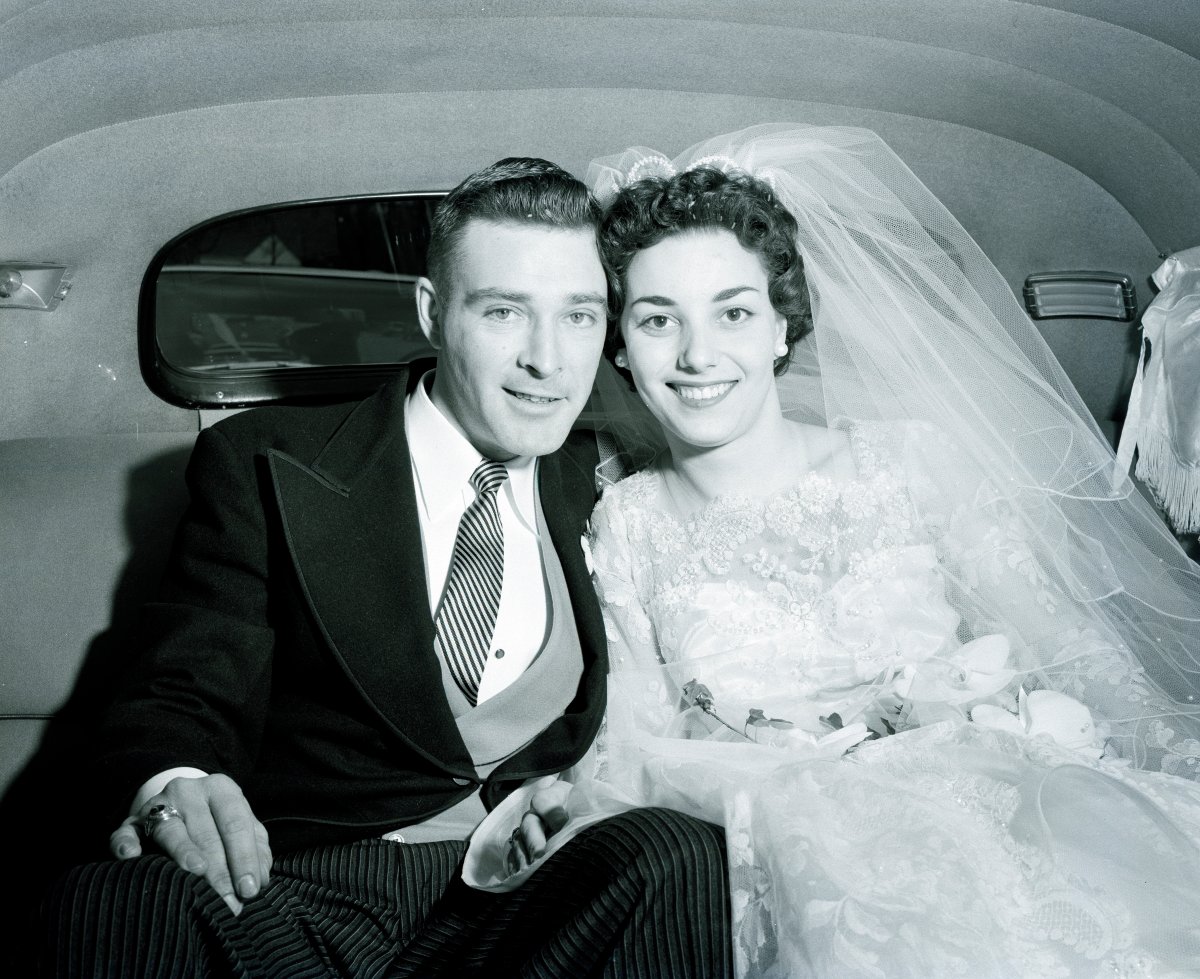Canadian brides-to-be spend an average of 4.4 hours per week online reading up on wedding-related material, according to a recent survey by wedding magazine Weddingbells. The average guest list is about 130 names long, the same poll reveals, and couples expect to pay over $30,000 for their wedding. That’s in a country where the median after-tax income is about $55,000.

The figures, which mirror those in the U.S., are staggering. How did what’s supposed to be your “big day” go from ‘big’ to huge?
READ MORE: 7 destinations for affordable wedding dresses under $1000
It wasn’t always that way. Until the last quarter of the 19th century, weddings were a subdued affair, according to historian Vicki Howard, author of Brides, Inc: American Weddings and the Business of Tradition. Wedding cakes were homemade. A wedding gown was simply the best dress in a bride’s closet — and certainly not one meant to be preserved as a museum item forever after. Receptions were small gatherings held at home.
READ MORE: Here’s why you shouldn’t get married in May
How that evolved into North America’s cultural staple of the “big white wedding,” as Howard puts it, is a fascinating story — and one in which Canada plays a surprising pioneering role.
Wedding ‘traditions’ that really came from trade magazines
- Premier Moe responds to Trudeau’s ‘good luck with that’ comment
- Drumheller hoping to break record for ‘largest gathering of people dressed as dinosaurs’
- As Canada’s tax deadline nears, what happens if you don’t file your return?
- Planning a summer trip to Quebec’s Îles-de-la-Madeleine? You’ll have to pay up
It was at the beginning of the 20th century that businesses started seeing marriage as an opportunity with mass market potential, writes Howard.
As industrialization drove up household incomes and lowered manufacturing costs, a range of wedding goods and services that were only available to the upper middle-class and elites began to have much broader appeal in the 1920s and 1930s.
READ MORE: Five wedding regrets and how to avoid them
Wedding bands for men
Take men’s wedding bands, for example. While the practice of giving women a wedding ring as a symbol of the marriage bond goes back centuries, it wasn’t until the Second World War that wedding bands became popular for men, too.
And that, Howard says, was largely the result of a marketing campaign.
READ MORE: Millennials are spending a lot of money to go to weddings
Jewellers, who at the time were pushing to overcome government restrictions on gold supplies for commercial use, saw an opportunity to tug at the heartstrings of a nation at war.
In a series of patriotic ads, the jewelry industry started to push male wedding bands as “a symbol of what men were fighting for — democracy, but also the nuclear family,” Howard said.
READ MORE: 5 money-saving tips to help you avoid wedding day disasters
The campaign was a success. Hollywood stars, from Shirley Temple to Humphrey Bogart, were quick to adopt the so-called “double-ring ceremony,” said Howard. And those celebrity endorsements quickly helped push the trend into the mainstream.
Howard even uncovered an issue of a Catholic publication called the Ecclesiastical Review featuring a discussion of whether and how to modify the traditional Catholic marriage ceremony to accommodate the novelty of a ring for the groom.
Gift registries
Jewelers and department stores are also behind the idea of gift registries, according to Howard.
The custom of gift-giving has deep historical roots. And there was also a well-documented custom among women in the colonial U.S. to manufacture a host of goods — from sheets to tea towels — to bring into the new household after marriage.
But it was jewelers, who once upon a time also sold silverware and china, that came up with the idea of brides drawing up a tableware wishlist, Howard told Global News.
The ‘tradition’ was later codified into the modern gift registry by Chicago department store Marshall Field’s in the 1920s, she added.
READ MORE: Man shocks girlfriend by proposing in courtroom; judge plays along
White gowns
Single-purpose wedding gowns — to be worn on the special day only — became a thing in the early 20th century, thanks to the rise of ready-to-wear fashion.
The origins of the tradition of wearing white are bit more nebulous, though, Howard explains, with some tracing the custom back to the colour white as a symbol of female virginity, and others highlighting the role played by Queen Victoria, one of history’s first “celebrities” to sport a white wedding gown.
Eaton’s Wedding Bureau
Among the department stores that led the charge into the wedding market was Eaton’s in Canada.
READ MORE: Here are our 10 picks for Canada’s greatest brands of all time
By the late 1930s, the retailer had its very own Wedding Bureau, a vertically integrated wedding planning and catering service that covered every aspect of the ceremony and the reception, according to Brides, Inc.
The Canadian department store also held regular promotional events and, starting in 1939, a bride’s week, which helped establish it at one of North America’s wedding industry leaders of the early 20th century.
“Merchants and vendors from the U.S. used to cross the border to visit Eaton’s and educate themselves about the industry,” Howard told Global News.
WATCH: Pippa Middleton arrives at church for her wedding

Don’t feel bad about breaking with ‘tradition’
Today, the wedding services industry is worth some $58 billion in the U.S. — and that’s not counting jewelry stores, which bring in another $35 billion or so, thanks to wedding and engagement rings, according to market research by IBISWorld.
Size-wise, the rise of the wedding industry was a marketing triumph.
But as household incomes stagnate and the marriage rate declines, the industry’s growth rate has began to slow down.
Revenue growth has take a hit from the rise in the do-it-yourself approach to weddings, which allows couples to save by cutting out middle men like wedding planners, according to IBISWorld.
Increasingly, cost-conscious young couples are even resorting to hosting wedding receptions at home.
The irony is, shunning cupid-shaped ice sculptures in favour of home-baked goods served in your backyard might be the truly traditional way to throw a wedding.
WATCH: Is it fair for couples to schedule their wedding on a long weekend?





Comments